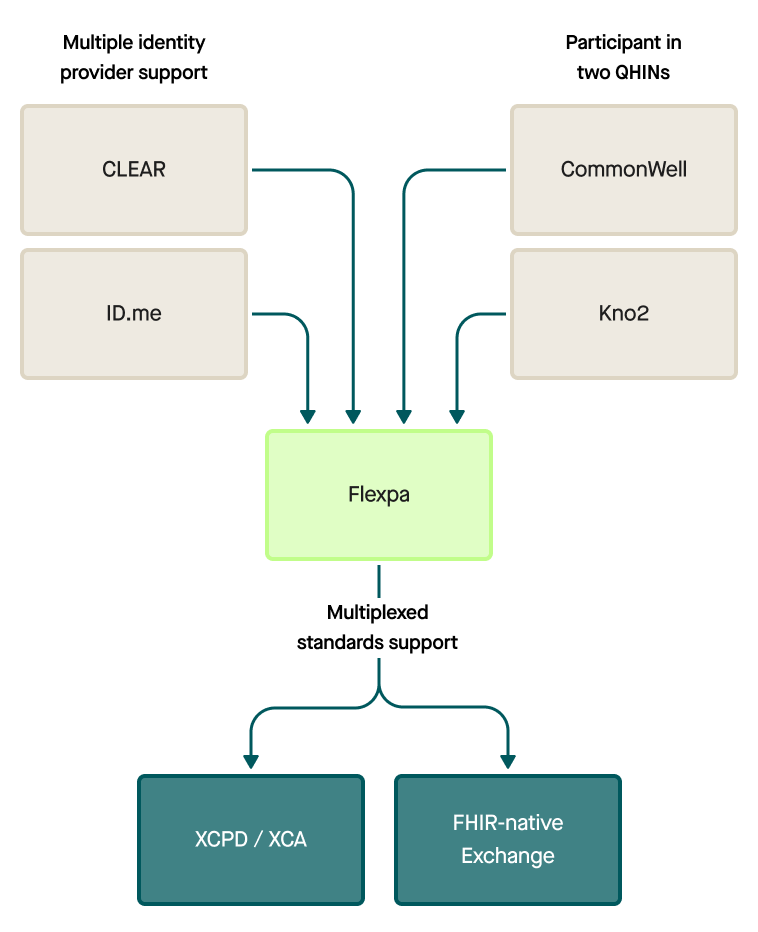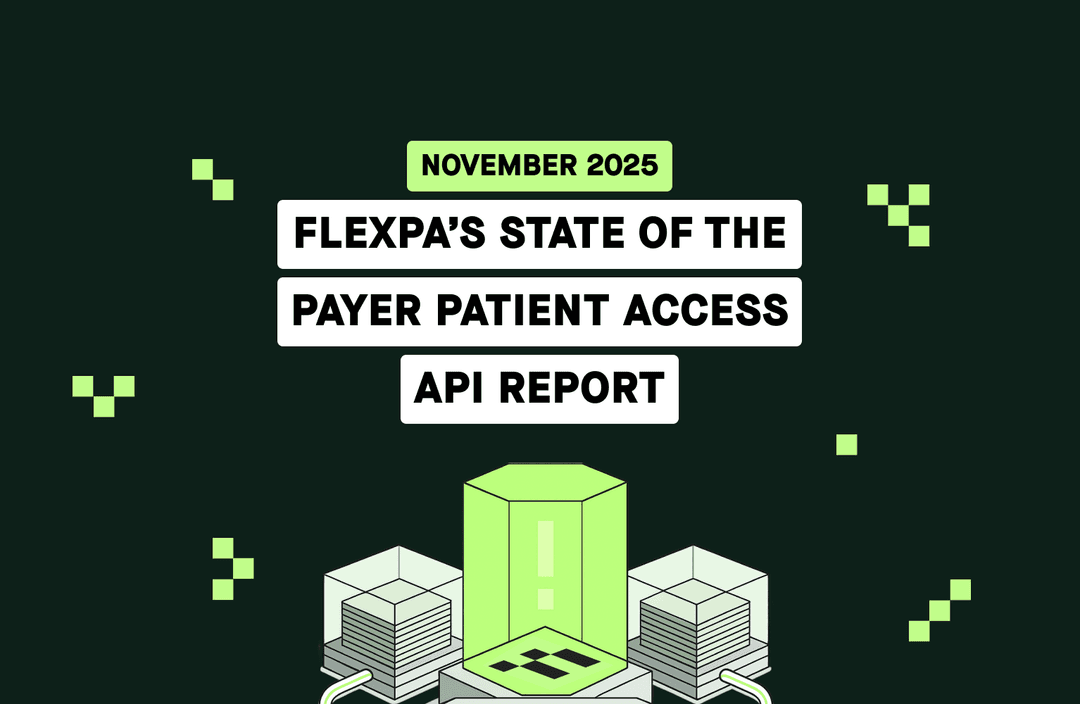Welcome to Day 2 of our Fall 2025 Launch Week! Missed Day 1? Read about Day 1's launch.
Today we're excited to announce that Flexpa is now an Individual Access Services (IAS) Provider on TEFCA, the national framework for health information exchange.
There's more.
No other IAS Provider has done what we've done yet - supporting the two largest US identity providers, CLEAR and ID.me, and dual partnering with Qualified Health Information Networks (QHINs) Kno2 and CommonWell to bring nationwide patient-consented clinical record access to developers.
IAS purpose of use on TEFCA provides expansive and permissive opportunities for patient-consented data exchange. Unlike the narrow constraints on treatment purpose of use, IAS is broad and patient-directed.
What used to require complex integrations with multiple networks is now simplified to a FHIR interface with Flexpa.
Flexpa now, more than ever, means flexible patient access.
Why TEFCA IAS Matters
The Trusted Exchange Framework and Common Agreement (TEFCA) establishes the national infrastructure for secure health information exchange across the United States. Individual Access Services (IAS) is one of TEFCA's core exchange purposes, specifically designed to empower patients to access their health records across participating networks through apps of their choice.
TEFCA IAS enables patients to access their clinical records from hospitals, clinics, and EHR systems nationwide through participating applications. The difference compared to CMS-9115 and ONC (g)(10) APIs is that instead of scattered patient portals and manual record requests, patients authenticate once through Flexpa, and retrieve their records digitally across the entire TEFCA network.
This represents a fundamental shift in patient-centered data access. As regulatory tailwinds continue to support patient-consented data pathways, TEFCA IAS positions patients at the center of their health information, giving them true control over how their data flows between providers, applications, and care settings.
The Flexpa Simplification
Our implementation strategy focuses on maximizing network reach while maintaining simplicity for developers.
We've partnered with two identity providers and two QHINs to give patients maximum flexibility and expand addressable individuals across the network.

Despite this behind-the-scenes complexity, developers see none of it. Enable TEFCA in Flexpa Consent SDK with a simple parameter. Patients select their preferred identity provider, complete verification, and Flexpa handles the rest—querying across QHINs, discovering patient records, retrieving clinical documents, and wrapping everything in FHIR DocumentReference resources.
Our implementation includes 90-day authorization periods aligned with ONC (g)(10) reauth timelines, with automatic token refresh. Same SDK, same FHIR API endpoints, same developer experience you already know.
What Does This Mean?
TEFCA IAS unlocks a new category of health data that hasn't been digitally accessible at scale: clinical records from provider visits, hospital stays, and diagnostic testing across the entire care continuum.
TEFCA IAS delivers clinical notes, lab results, diagnostic reports, imaging studies, and procedure documentation—the actual clinical story that claims data only hints at. Medical notes document the "why" behind diagnoses and treatment decisions, providing context essential for care coordination and second opinions. Reliable, structured lab results and diagnostic findings enable tracking health metrics over time, especially valuable for chronic disease management. Procedure notes and operative reports bridge the gap between "a service was billed" and "here's what actually happened clinically," giving applications access to the complete patient health profile.
Why Is This a Big Deal?
Until now, accessing clinical records from multiple health systems required patients to manually request records from each provider, wait for PDFs or paper copies, and upload or forward them to applications individually. This manual process was slow, error-prone, and created significant friction for both patients and developers building health applications.
TEFCA IAS makes this digital. Patients authenticate once, authorize access, and their clinical documents flow automatically through a standardized API. For developers, this means building applications with complete patient health profiles—not just insurance claims, but the actual clinical story documented by providers. The combination of payer data (what was billed and covered) with provider data (what was diagnosed and treated) creates unprecedented opportunities for care coordination, patient engagement, and clinical decision support.
This is the vision the 21st Century Cures Act set out to achieve: patients controlling their health information, able to share it seamlessly with applications and providers of their choice, with the technical infrastructure to make it actually work at scale.
Next Steps
Flexpa's mission is to put patients at the center of their care by connecting their healthcare data from everywhere, and helping them share it anywhere, anytime.
Ready to enable TEFCA IAS in your application? Schedule a demo or talk to us directly at partnerships@flexpa.com.
Interested in staying updated on Flexpa's latest features and industry developments? Subscribe to our newsletter. Ready to start building? Schedule a demo to learn more.




